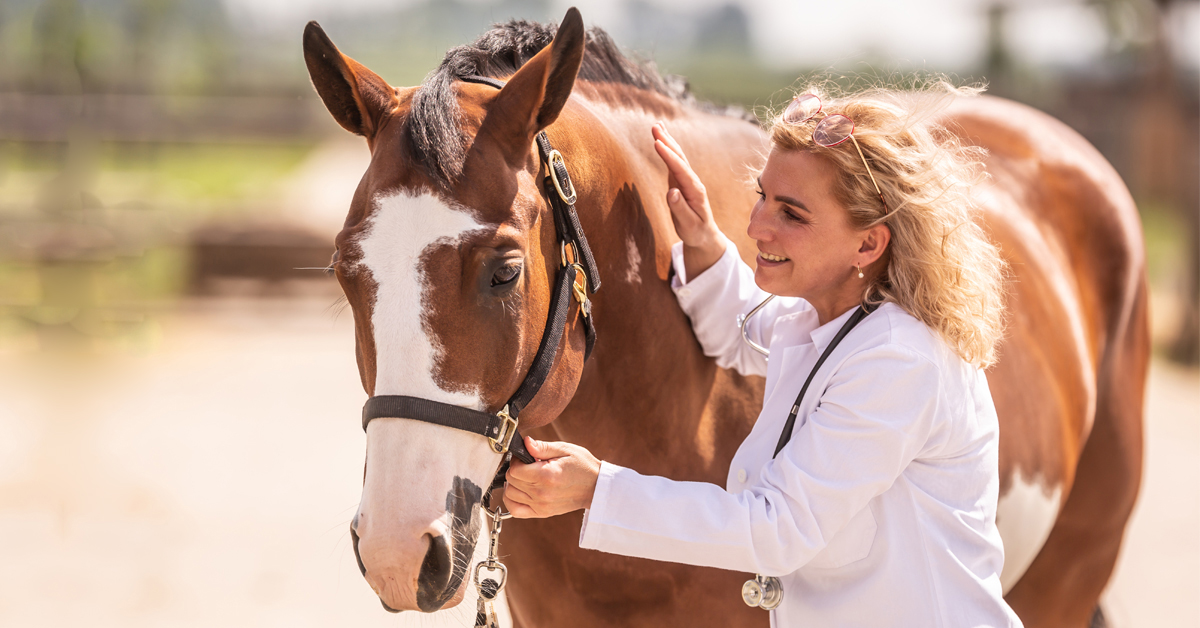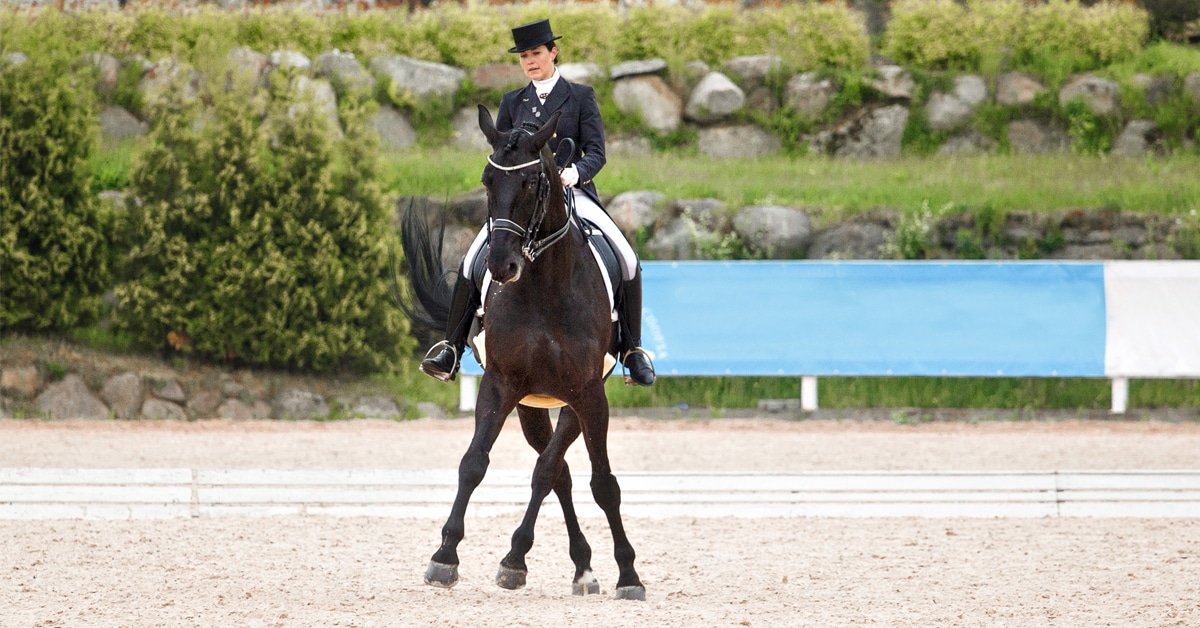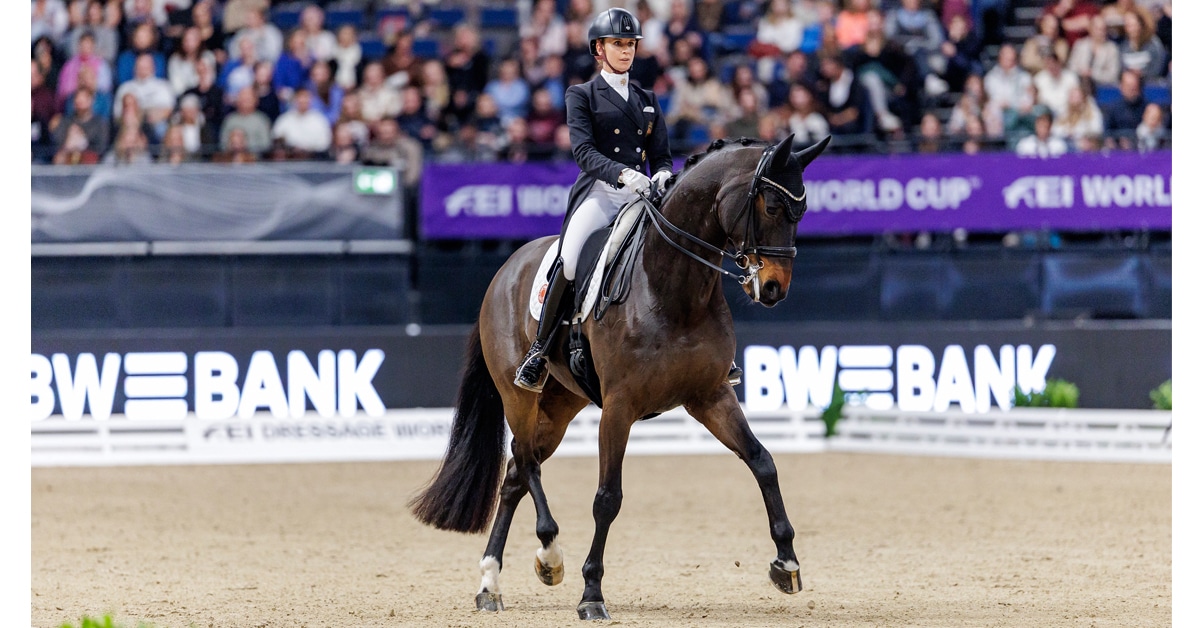Heaves is known as a disease that can leave a horse struggling to breathe, ending athletic careers and even rendering a pleasure horse unsuitable for riding. Commonly known today as equine asthma, it’s an irreversible disease brought on by repeated exposure to dust and moulds. Ontario Veterinary College researcher, Dr. Dorothee Bienzle has a long history of primary and collaborative work studying asthma in horses. Her most recent contributions include working with a group of researchers in Slovenia, investigating stem cells as a potential treatment option.
Dr. Bienzle explains the usual causes of heaves are long term exposure to dusty or mouldy hay, bedding, dusty environments and sometimes even grass in hot humid climates that provide the right conditions for mould to thrive. “Horses get sensitized to these components in the inhaled air and with time, they develop airway inflammation and that begins to manifest with occasional coughing or runny nose.”
With continued exposure to the same particulates, the condition worsens, and the coughing becomes more continuous. The nose may be running and then there is thickening of the bronchial wall in the lung. There is extra smooth muscle being laid down and it becomes hard for the horse to exhale against mucus and inflammatory cells in the lumen of the airway.
In the later stages of disease, horses can develop a ‘heaves line’ (hypertrophic abdominal muscles are recruited to assist with exhaling air). By the time equine asthma is diagnosed, it has usually been present for a few years, if not several. Treatment of the symptoms includes immunosuppression, but the disease cannot be reversed.
“The vast majority of the horses are unable to perform as athletic horses or even as a companion horse with a little bit more strenuous riding,” says Bienzle. “It’s an incurable disease for the most purposes. It’s somewhat treatable, but not curable.”
Dr. Bienzle elaborates on the importance of good hay, clean air and other important stable management considerations in a video interview where she goes on to explain the exciting new research investigating stem cells as a potential future treatment option.
The potential to downregulate inflammation with a biologic therapy like stem cells versus traditional drugs, like corticosteroids is clearly attractive. For administration of treatment, Bienzle explains there are already well-developed methods for examining the lower airway using endoscopes. Administering stem cells using this targeted method may be an appealing option versus intravenously where it is uncertain where the treatment ends up.
When explaining the challenges and expertise required to produce stem cells, Bienzle says, “This is not for the casual investigator because it takes some experience to have the right culture conditions to make sure those cells are clean. They are not cultured for very long, and when the final preparation is administered to an animal, it must be free of cell culture components that could make inflammation worse.”
The preliminary, proof of concept work is quite exciting, with stem cell therapy outperforming traditional corticosteroids. Stem cells have no side effects per se, as many drugs do, which makes the study of biologic treatments very attractive.
This study, Effect of intrabronchial administration of autologous adipose-derived mesenchymal stem cells on severe equine asthma, published in Stem Cell Research and Therapy, was funded by the Slovenian Research Agency fund. The ground-breaking work is in its infancy with future studies planned which could one day help horses, and potentially humans suffering from asthma utilizing biologic therapy.
More tips on equine respiratory health available for download at Equine Guelph.ca
Dr. Bienzle has recently been named to the Canadian Academy of Health Sciences for outstanding contributions in the field of research.
More News









